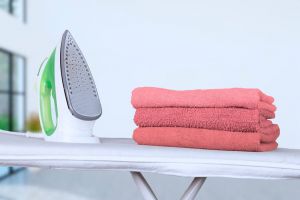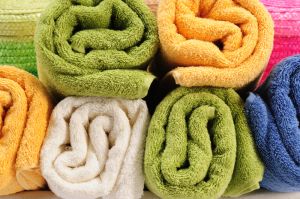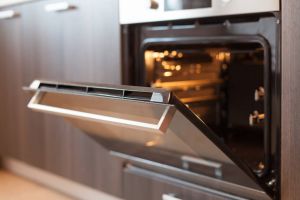About one in three Australians (30%) use their clothes dryer after every wash, according to Canstar Blue research. Because, contrary to popular belief, not all of us enjoy warm sunshine all year round! In fact, Australia is often prone to wild weather, including heavy winds, downpours, and sometimes floods, which is when clothes dryers can be a godsend for your clothes and sanity. A clothes dryer is still the most reliable option for drying laundry in a jiffy, but what if yours breaks down or if you don’t own a dryer at all?
Fret not, we’ve listed the top five ways and hacks to dry your clothes (without a dryer) in a super quick time.
1. The hairdryer treatment

For a quick fix, you can use a hairdryer to blow-dry your clothes (yep, you read that right). It’s not so much the heat that will do the work, but the blowing and airflow of the hairdryer. To dry your clothes with a hairdryer use a low heat setting and a high fan blower setting, and slowly rotate the item of clothing as you blow all over. Be sure to blow out all the pockets, sleeves, collars and other nooks and crannies. Any damp spots you leave behind become havens for bacteria and mould.
2. The towel and iron method

Ok, so this hack isn’t suitable for drying an entire load of washing, but it can help you dry an item or two quickly. Start by placing a dry bath or face towel over your ironing board, then put your washed piece of clothing down over the towel, and then cover it with a second towel (like a sandwich). To dry your clothing, iron right over the towel from edge to edge. The towels will absorb excess moisture and protect the clothing from the direct heat that would melt the damp fabric while still letting enough heat through to dry the material. Bonus – it’s also a great steam trick for getting rid of wrinkles!
3. Roll your clothes into a towel

This is similar to the method above but doesn’t require an iron. Simply place a garment into a large fluffy bath towel and then roll it up tightly or use a twisting motion, so that the towel can absorb the access moisture from your wet clothes. Start at one end and then roll up the towel with your item of clothing inside until the towel is twisted to the maximum. Repeat this process twice and then let your item of clothing air dry.
4. Place your wet clothes near a heater

Place a heater in a small but well-ventilated room (the laundry) and then hang your clothes on a clothes horse next to the heater, approximately one or two metres from it. The heated air produced by the heater will dry your clothes in a matter of hours. It’s also good to have a dehumidifier in the room to reduce humidity and prevent mould.
Please note: You should never place any items of clothing or material over an electric or gas heater as this poses a fire hazard.
5. Oven drying (small items only)

Yes, you can use your oven for cooking and drying small items of clothing like tank tops, socks, and underwear (although it’s not designed for this purpose). Heat your oven to 100⁰C for 10 minutes and then turn it off again. Place small items of clothing in a baking tray (with a baking sheet) and make sure nothing will be able to touch the element or the walls of the oven. Keep in mind, this option is slow. It takes an hour for an oven to heat just two pairs of boxer shorts.
Please note: This method isn’t the best for your oven, as humidity from the wet clothes can build up inside the appliance, and reduce its performance and lifespan.
How NOT to dry your clothes (in the microwave)
CAUTION: Drying clothing, especially large items like shirts, jeans, and bed sheets in the microwave can cause electrical fires. It is NOT recommended.
Should you dry your clothes inside?
Not if you can help it. Drying clothes indoors can lead to a growth of mould and dust mites which are hard to get rid of and can directly impact your health. There’s about two litres of water that evaporates out of freshly-washed clothes, and it goes straight into the air. If that air is outside, great – it can join the clouds. If that air is inside, it rises as condensation on your windows and can create deadly mould and dampness in the corners of your walls. If drying your clothes inside your home is your only solution, make sure to do so in a well-ventilated room and use a dehumidifier to reduce humidity.
You may also be interested in:
- Dehumidifier Ratings
- Different types of clothes dryers explained
- Heat pump vs condenser dryer: Which is best?
- Types of heaters: Which is right for you?
Which clothes dryer is best to reduce humidity?
Both vented and contender dryers work relatively well to reduce humidity while drying laundry. A vented dryer vents the excess moisture from wet clothes directly outside through a hose, while a condenser dryer extracts the moisture from the clothes and drains it away as condensed water in a storage tank.


Share this article